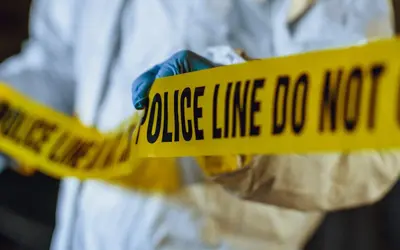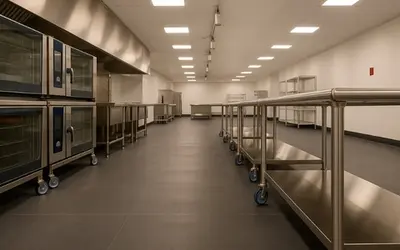Biohazard Cleaning: How to Clean Crime Scenes, Meth Labs and More

Biohazard cleaning is one of the most physically and emotionally demanding jobs around. These professionals step in after the police, investigators and forensic specialists leave. Their job is to put the scene back to its original state by cleaning and sanitizing the home, business or vehicle.
All while maintaining the utmost discretion, professionalism and sensitivity.
Often called ‘second responders‘ biohazard cleaning professionals must be available 24 hours a day and be well trained on bloodborne pathogens and personal protection equipment . They also need the stamina, and the stomach, for a strenuous and unpleasant job. Crime and trauma scene decontamination (CTS Decon) specialists can be called for a variety of situations.
Crime Scene Cleanup is Challenging
Homicides or any crime that leaves behind blood and human tissue must be thoroughly cleaned and sanitized to remove potentially infectious materials. Diseases like HIV, MRSA, Hepatitis B, Hepatitis C and the Measles can all be transmitted through blood and other fluids.
Because of the risks, CTS Decon specialists must undergo rigorous training. According to Crime Clean Up.com that OSHA-mandated training includes:
- Yearly bloodborne pathogen training
- Access to personal protective equipment (PPE)
- Training on how to properly use PPE
- Training on the removal, packaging and proper storage of biohazard waste
- Training on where to properly dispose of contaminated waste
- Be vaccinated for Hepatitis B
Thorough biohazard cleaning and crime scene cleanup means finding and disposing of every drop of blood and bit of tissue. This can involve ripping up carpet and hardwood floors and cutting away porous drywall, if necessary
Unattended Bodies Require Special Care
Unattended bodies, where the deceased has not been discovered for some time, bring other cleaning and sanitizing challenges. Along with the risk of bloodborne infections, unattended bodies can attract insects and other vermin that can transport germs throughout the site. Decomposition, which begins quickly, can release potentially harmful, and malodourous, bacteria.
Removing that smell should be the last job on the CTS Decon specialists list.
Cleaning Meth Labs, Tear Gas and Hoarders
Specialized biohazard cleanup extends to meth labs, instances where tear gas was used and hoarders. Each situation calls for specific procedures and protocols.
Meth labs leave dangerous chemicals in their wake. Proper cleaning starts with ventilation, often several days before cleaning begins and continues throughout the process. Carpet, drapes, upholstered furniture and other porous materials should be collected and destroyed. Use a HEPA filter vacuum on hard surfaces before triple washing and rinsing.
Cleaning tear gas residue also requires removing and disposing of all porous materials and vacuuming hard surfaces with a HEPA vacuum before cleaning with a specially formulated agent. Because tear gas Is a heavy particle that settles downward, a top to bottom workflow is recommended. ‘Even if there’s no visible tear gas in areas such as basements, air conditioning systems may have brought exposure into those areas so test and clean accordingly,’ according to an article in Cleaning & Maintenance Magazine.
Cleaning up after someone with a hoarding disorder is another specialized service that requires a respectful approach. These homes can be fire hazards and often have insect and mice infestations and mold. There may not be electricity or running water. Residents with the disorder may resist help or even become violent.
Specialized Training and Personal Protection Equipment
A CTS Decon specialist cleans the interior of a vehicle using Kaivac upholstery tool with powerful vacuum.
Aside from the yearly blood bourn pathogen training, OSHA laws require knowing how to handle respiratory risks and how to work in confined spaces. Above that, there really is no nationwide certification for CTS Decon specialists. Currently Florida and California are the only states that require a Trauma Waste Practitioner permit before soliciting work.
However, there are private crime scene clean up schools that offer formal training and certificates of completion in hazardous workplace situations. One school, the National Institute of Decontamination Specialists (NIDS) based in Piedmont, S.C., teaches students from around the world how to properly and safely clean crime scenes and perform other high-risk environmental disinfection services. The American Bio Recovery Association also offers education, certification and guidance.
CTS Decon specialists must also know how and when to use Personal Protection Equipment (PPE). This full-body, disposable jumpsuit includes a hood to protect the head and ears. Booties and two sets of gloves keep feet and hands free of contaminants. Finally, eyes, nose and mouth are covered with a face mask. The face mask protects workers from fluids while filtering odors and toxins.
The Right Biohazard Cleaning Tools
Biohazard cleaning requires that contaminants and hazards be fully removed. The importance and risks of this task demand state-of-the-art equipment, yet many technicians still use disposable mops, sponges, wipes and lots of manual scrubbing. This time-consuming approach is hard on the cleaning specialists, who often spend hours on their hands and knees scouring hard surface floors, and hard on families who have to wait longer to reclaim their homes.
Savvy CTS Decon specialists are moving to more advanced technology like the Kaivac No-Touch Cleaning system. This tool deep cleans and fully removes dangerous bio hazards. Jeff Darr, owner of Crime Scene Services, Inc. owns three No-Touch machines and wouldn’t enter a job without one.
‘It just gives me a better chance to serve the needs of the family – to clean more and do a better job,’ he says. ‘I’m able to thoroughly clean and get it done the first time.’
Related Posts

A Guide to Crime Scene Cleaning
Read more
The Challenges of Crime Scene Cleanup
Read more
Floor Cleanliness and Food Safety Scores
Poorly maintained floors are unsafe and unsanitary. They hold standing water, harbor pests, and cause slip, trip, and fall accidents. Here’s how to improve floor care and your food safety scores.
Read more